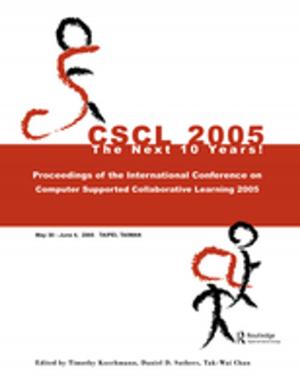The Communist Quest for National Legitimacy in Europe, 1918-1989
Nonfiction, History, European General, Modern, 20th Century, Social & Cultural Studies, Political Science| Author: | ISBN: | 9781317986393 | |
| Publisher: | Taylor and Francis | Publication: | September 13, 2013 |
| Imprint: | Routledge | Language: | English |
| Author: | |
| ISBN: | 9781317986393 |
| Publisher: | Taylor and Francis |
| Publication: | September 13, 2013 |
| Imprint: | Routledge |
| Language: | English |
There are two popular myths concerning the relationship between communism and nationalism. The first is that nationalism and communism are wholly antagonistic and mutually exclusive. The second is the assertion that in communist Eastern Europe nationalism was oppressed before 1989, to emerge triumphant after the Berlin Wall came down. Reality was different. Certainly from 1945 onwards, communist parties presented themselves as heirs to national traditions and guardians of national interests. The communist states of Central and Eastern Europe constructed "socialist patriotism," a form of loyalty to their own state of workers and peasants. Up to 1989, communists in Eastern Europe sang the national anthem, and waved the national flag next to the red banner. The use of national images was not the exception, but the rule. From Cuba to Korea, all communist parties attempted to gain national legitimacy. This was not incidental or a deviation from Marxist orthodoxy, but ingrained in the theory and practice of the communist movement since its inception.
The study of communist national legitimacy is an exciting new field. This book presents examples of communist attempts to co-opt nationalism from both sides of the iron curtain and lays bare the striking similarities between such diverse cases as the socialist patriotism of the Bulgarian Communist Party and the national line of the Portuguese communists, between Romanian communist nation building and the national ideology of the Spanish Communist Party.
This book was published as a special issue of Nationalities Papers.
There are two popular myths concerning the relationship between communism and nationalism. The first is that nationalism and communism are wholly antagonistic and mutually exclusive. The second is the assertion that in communist Eastern Europe nationalism was oppressed before 1989, to emerge triumphant after the Berlin Wall came down. Reality was different. Certainly from 1945 onwards, communist parties presented themselves as heirs to national traditions and guardians of national interests. The communist states of Central and Eastern Europe constructed "socialist patriotism," a form of loyalty to their own state of workers and peasants. Up to 1989, communists in Eastern Europe sang the national anthem, and waved the national flag next to the red banner. The use of national images was not the exception, but the rule. From Cuba to Korea, all communist parties attempted to gain national legitimacy. This was not incidental or a deviation from Marxist orthodoxy, but ingrained in the theory and practice of the communist movement since its inception.
The study of communist national legitimacy is an exciting new field. This book presents examples of communist attempts to co-opt nationalism from both sides of the iron curtain and lays bare the striking similarities between such diverse cases as the socialist patriotism of the Bulgarian Communist Party and the national line of the Portuguese communists, between Romanian communist nation building and the national ideology of the Spanish Communist Party.
This book was published as a special issue of Nationalities Papers.















